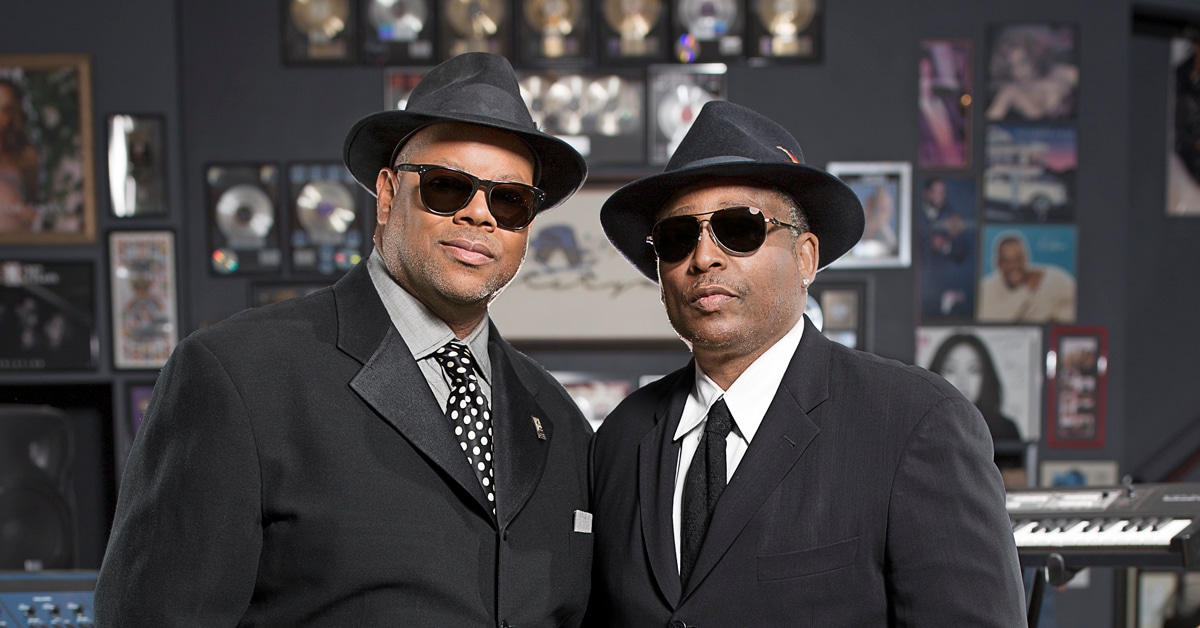[Ed. Note: This interview was originally published in July of 2016.]
Spending an afternoon with James “Jimmy Jam” Harris III and Terry Lewis in their studio just outside Los Angeles means splitting a lot of time between laughing and learning about the growth of the last 35 years of pop music, both technologically and musically.
Think about it for a moment—Jam and Lewis have had more Billboard Top 10 songs than any other songwriting and production team in history. They also have had a phenomenal number of tracks in the Hot 100, from the S.O.S. Band’s “Just Be Good To Me” to “No Sleeep” from Janet Jackson’s latest release, Unbreakable, the latest in the creative collaboration that started with Jackson’s breakthrough 1986 release, Control. Their partnership has survived the transition from vinyl and cassettes to CDs, MP3s, streaming and right back to the increasing resurgence of vinyl. Through it all, they’ve continued to make exciting, contemporary, catchy and deeply grooving music with artists across the musical spectrum.
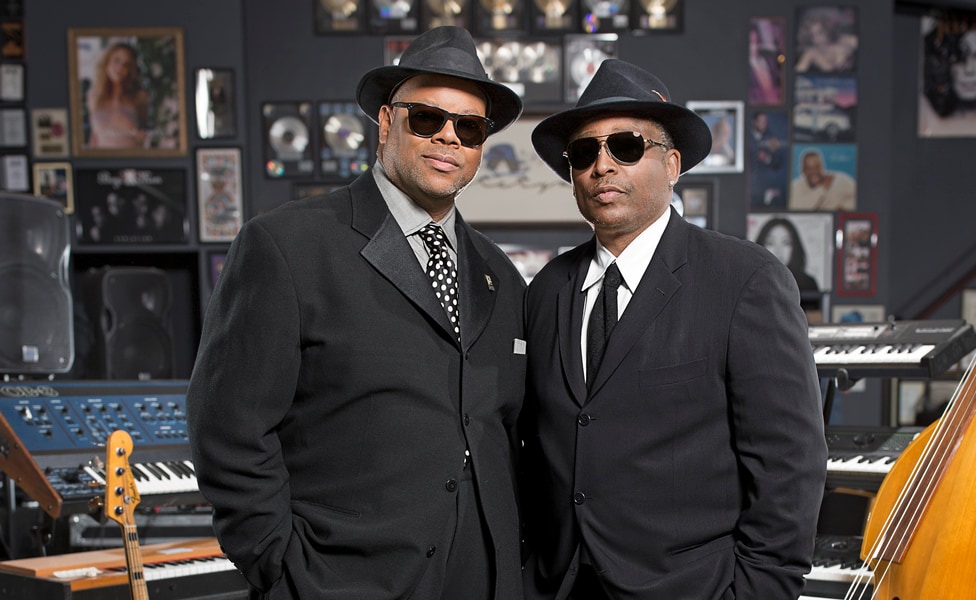
“We’ve always kind of embraced the idea of not only getting to know the artists well, but also giving each artist their own, unique sound in their own, unique style.” – Terry Lewis
One of the marvels of it all is that they have maintained a creative partnership over four decades—all based on a 35-year-old handshake deal—a feat few have been able to manage. “Obviously, we have a long history together,” says Jam, the more talkative of the pair. “It starts with respect as the root, and really, all other things go from there. We don’t argue. Our philosophy has always been that it’s not about my way or it’s not about his way, it’s about the best way. Once we figure out the best way to go about it, that’s what it is.”
“When you love a person,” adds Lewis, “and I do love this man, both musically and as a friend—as a brother—you just learn to love whatever they love. So you respect whatever they love, and you treat it with the same respect that they do. That’s been a very important part of our relationship, musically, as well.”
That respect carries over to the artists they work with, resulting in a string of albums that, as many pop hits as they have generated, still have a sense of identity and ownership by the artist. “I think getting to know the artists is one of the most important things that you can do as a producer,” says Jam. “We’ve always kind of embraced the idea of not only getting to know the artists well, but also giving each artist their own, unique sound in their own, unique style.”
Jam, always one of the snappiest dressers on the scene, has compared their style of production to custom tailoring, working with the artist to find exactly what will hang just right on their creative ideas. From their first big record, the S.O.S. Band’s “Just Be Good to Me,” it’s been an approach that has made for some unforgettable music. “‘Just Be Good to Me’ was born of really, not only our ideas of writing a song,” says Jam, “but also taking and looking at what they had done before, as fans, and going, ‘well, we know, as fans, what we would like to see the SOS band do. Let’s write that song for them.’”
That approach has led to some interesting moments over the years. “ I remember we were working with Barry White, Jam says. “I remember we played [him] a track. When the track went off, he just laughed—and, of course, he had the big, low voice. We said, ‘Is that cool, man? Do you like that?’ He said, ‘Ha, ha. Sounds like me.’ That’s the best complement you can get, somebody tells you, ‘It sounds like me.’”
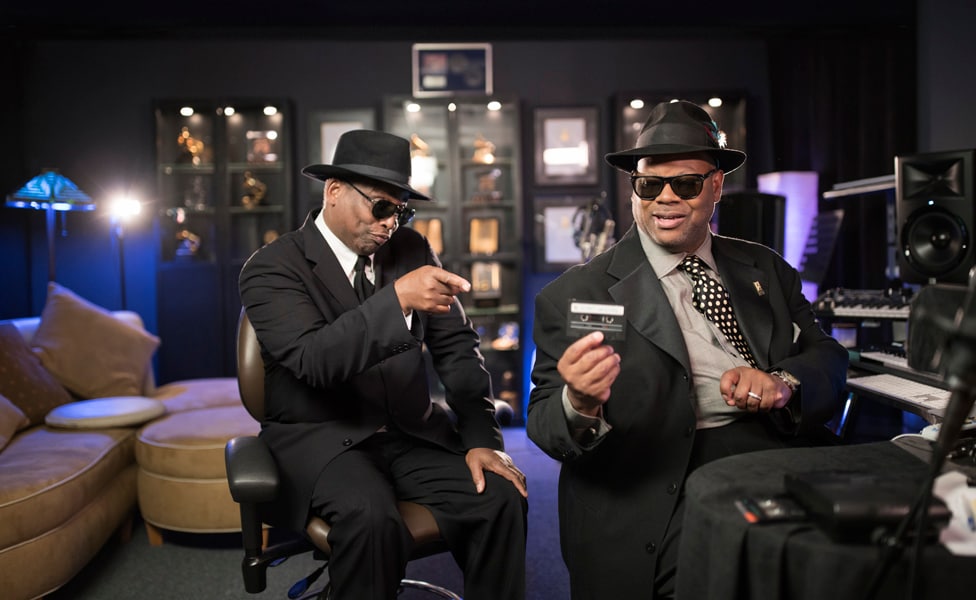
“The song should take you on a journey. It should be ups and downs, and breakdowns, and dynamics…” – Jimmy Jam
Another signature for Jam and Lewis has been the ability to find the funk in emergent music technologies, utilizing some pieces in original ways that then become the sound everybody else is chasing. “We embraced the technology,” says Lewis. “But being people that don’t really read directions, we were never told what to do with the technology. We just kind of did it off the cuff, and made it work, the 808 [Roland TR-808 drum machine] being one thing that we used differently than anyone had used it before. People were using it, but nobody put the ‘boom’ in it. That was just kind of a mishap, haphazard thing—just from playing around while we were recording. Jam was going by and detuning things and he put the ‘boom’ in, and we left it in the song.”
A big part of the immediacy and groove of the tracks flowed from studio experimentation. “Literally, you turned the tape machine on, pressed play on the drum machine, and just played,” says Jam. “And then sometimes we would switch the beats up and we’d do different things, but it was all just freeform, and freehand. And then we would go back and figure out why, when we went to that change there, what the heck should we do there? ‘Should we do a chord change there? Yeah. Let’s just do a chord change there. OK, cool.’ And then we would do it. So the songs would kind of evolve, and the arrangements for the songs would kind of evolve like that. It was using the technology, but it wasn’t letting the technology use us. Like, I never sequenced a thing, [not] even the drum machine beat. I would put a main beat in, but then I’d, on the fly, switch to different beats, or I’d put a fill in by hand. Then we’d always go back and add what we call pings and zings. Pings and zings would always be live percussion, live cymbals and that kind of thing, so that it always had a feel to it.”
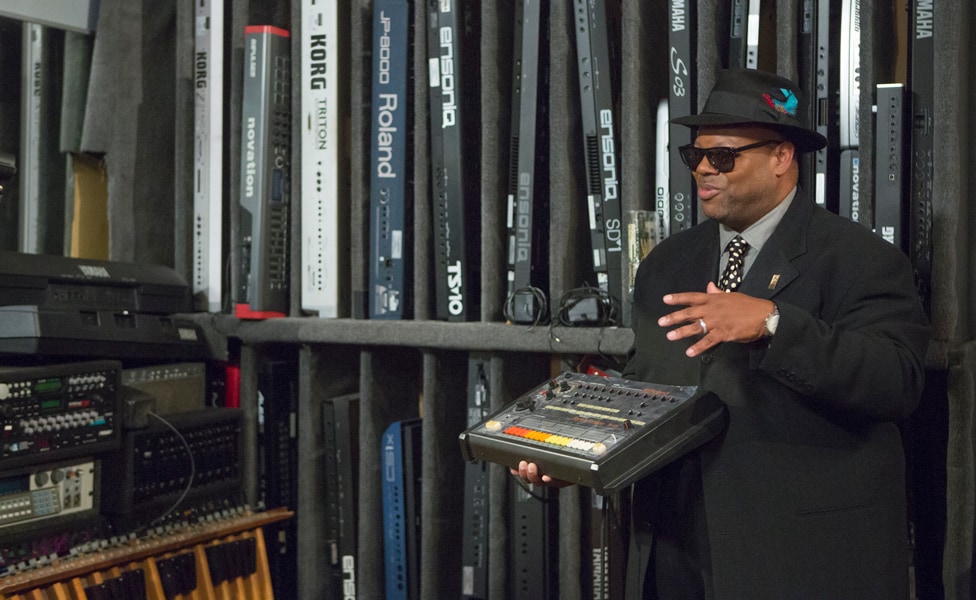
Another tool in their kit is the idea that a song is a road you travel, not just a place you sit. “What I hate about some records nowadays,” Jam says, “is if you make everything on a loop, just a four-bar loop, then, literally, the song is the same at the beginning as it is at the end—there’s no journey. The song should take you on a journey. It should be ups and downs, and breakdowns, and dynamics and those kinds of things. So we always tried to put those types of things into the track, little ear candy things that would, maybe it would only happen one time. when we started flying vocals it never was precise—it wasn’t putting it on a grid and going so each one was the same. Maybe the first one would be a little behind, and the next one would be a little ahead. Everything was trying to have a more of a human feel. Back in the early days, you couldn’t see audio. You heard it.”
Lewis adds, “I think the way that we’ve always tried to work is just to be free, and to have nothing encumbering us from doing what we want to do. With anything, whether it be back in the day, or even now, you’re only as good as the brain you have—the brain being the engineer, or what you know. So if you don’t have a good engineer that can guide you in the proper direction, you’re going to get into a crazy space. You’re not even going to know where you are if you get too far out on a tangent in the technology. So we’re very basic in terms of technology. We keep it right here, but we’re willing to expand based on the knowledge base that we have. I like to get into more plug-ins and understanding how to work them, but I like them to mimic things that I understand. I had to call Harrison not long ago and say, “Hey, do you guys sell an EQ that I could just buy in my plug-in?” Because I know what buttons to push. I know what knobs to turn. I know how to work this, because we always had Harrison consoles. It’s just based on your knowledge. You can do anything now, I think—but only as much as you know.”
Jam expands a little further, saying, “I think creatively, the approach, too, is trying not to think so much about things in bars and measures, but still trying to think of a whole song. A lot of times, for instance, if I’m doing a drum track, rather than doing a four-bar loop or eight-bar loop, or whatever, I will play the whole [song] down with fills and the whole thing. Then I’ll go back and I’ll maybe correct a few things. If something’s way far off, I’ll probably go back and correct it. So, for me, the compromise is that, yes, it’s easier to correct things, but a lot of the funkiness and a lot of the, as Terry calls it, just being free, comes with the mistakes. That is part of the feel of it. I think it’s kind of a balance.”
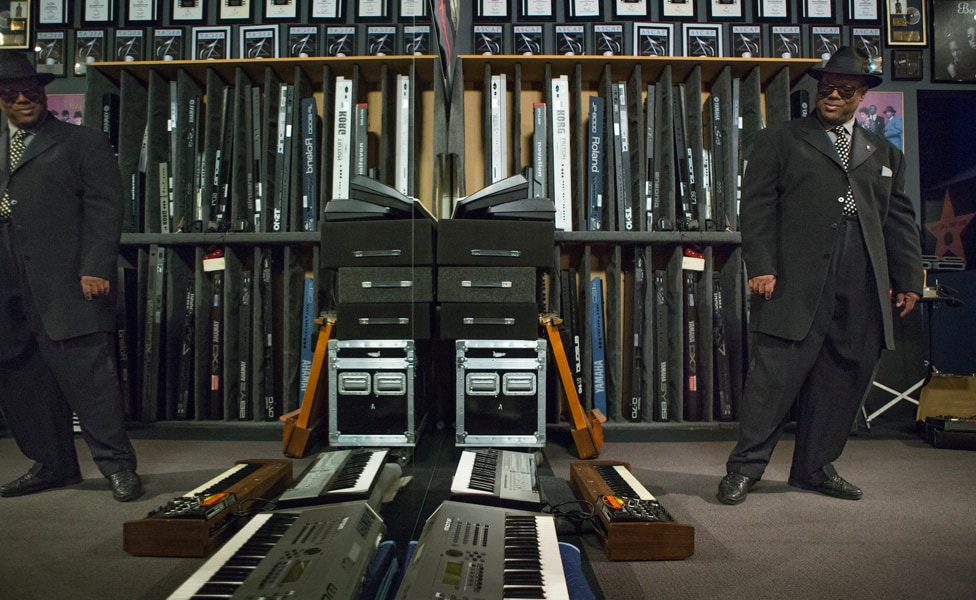
As part of working with Janet Jackson on her new release, Unbreakable, Jam and Lewis dug back into their warehouse, filled with virtually every piece of gear they’ve ever used, from the original TR-808 that was featured on early hits, to the latest Roland TR-8, the Telefunken ELA M251 mic that’s Janet Jackson’s favorite, an Audio-Technica AT4050 that’s features on a Peabo Bryson project and much more. “We have a big warehouse, basically,” says Jam, “and every keyboard that we’ve ever had is here, and pretty much in working order. We can go back and pull sounds from 30 years ago, and pull the real keyboard that actually played those sounds. Unbreakable, to us, as an album, sonically was very much a mixture of new sounds [and] new technology, but also going back to the roots of Control, and Rhythm Nation. The intent was to make a record that sounded timeless—that could have been the follow-up to any of those albums. For instance, on “Burnitup!” there’s a Ensoniq Mirage sound [that] kind of sounds like wind whooshing. It’s always been associated with Janet, because we used it on Control and on Rhythm Nation, at the beginning of “Miss You Much” and some of the other songs. That was a sound that we brought back for Unbreakable. We hadn’t used it in a while, and it just fit. It felt like that.”
Asked about future plans, it’s obvious that they’re still among the busiest producers on the scene. The aforementioned Peabo Bryson project that’s was in the mix stage when we talked, grooming and producing a new group of young men called The Roney Boys, and at long last, a Jam and Lewis record, made with guest appearances from many of the artists they’ve produced. “I’ll tell you how long it’s been in the making,” says Jam. “Here I have two cassettes. This one says “Secret Grooves.” This is a nice TDK from 1986, I believe. And we have another one, here, that says “Jams for Us.” This is the origin of the Jam and Lewis album, back in the day.” But don’t let that last phrase confuse you, because Jam and Lewis are planted firmly here, in the present, looking to what new music the future may bring.
Since this interview was originally published, Jam and Lewis have released their debut studio album, "Jam & Lewis: Volume 1". Check it out below and keep up with them on Instagram and Twitter.










